This article was co-authored by Courtney Fose, RD, MS and by wikiHow staff writer, Jessica Gibson. Courtney Fose is a Registered Dietitian and Certified Nutrition Support Clinician at the University of Arkansas for Medical Sciences. She has worked as a Dietitian since 2009, and received her MS in Clinical Nutrition from the University of Arkansas in 2016.
There are 15 references cited in this article, which can be found at the bottom of the page.
This article has been viewed 57,931 times.
Protein is one of the body's most important nutrients, performing a variety of tasks in our bodies, including acting as enzymes and hormones (including insulin). The recommended dietary allowance (RDA) of protein defines the amount needed for the average healthy person and is suitable for roughly 97% of the population.[1] The amount of protein you need every day depends on your personal calorie needs, taking into account your age, sex, state of overall health, activity level and whether you need to lose or gain weight. Calculating the right amount of protein is important because too much protein can cause health problems. Excess protein can stress and overload the kidneys, be converted into body fat, cause dehydration and possibly increase the risk of diabetes, kidney disease and prostate cancer.[2]
Steps
Determining Your Protein Intake
-
1Meet with a dietitian. Since each person's needs vary and depend on a number of factors, consider working with a Registered Dietitian Nutritionist, who has been trained to determine your specific dietary needs.[3]
- Ask your doctor to recommend a nutritionist or find a Registered Dietitian Nutritionist from the Academy of Nutrition and Dietetics.[4]
-
2Calculate your recommended dietary allowance (RDA) for protein. Weigh yourself in the morning after using the toilet. Do this for five mornings and figure out your average weight. Multiply your average weight in pounds by 0.36. The result is your recommended protein intake in grams. The RDA for protein is 0.8 grams of protein per kilogram of body weight, which is why you should multiply your weight by 0.36.[5]
- You can also use online calculators to determine your RDA: https://www.nal.usda.gov/human-nutrition-and-food-safety/dri-calculator
- For example, a person who weighs 120 pounds should eat 43.2 grams of protein a day (120 x 0.36 = 43.2).
Advertisement -
3Determine your RDA by percentage. Another way to look at protein intake is to look at percentages. Depending on your age, gender, state of overall health, activity level and whether you need to lose or gain weight, your protein goal should be about 10 – 25% of your total daily calories.[6]
- While this amount may seem high when figured as a percentage, dietitians remind that RDA is the minimum amount needed to function. Most Americans get 16% of their calories from protein, although they should be getting more.
-
4Adjust your RDA. Some people need more protein than others. In general, children and teenagers need more protein (20 – 25% of calories) than adults. Men need more protein than women. And pregnant and lactating women need more protein than non-pregnant women (75 to 100 g per day).[7] Older populations may need more protein to guard against sarcopenia, so aim for 1.2 g protein per kg.[8]
- If you have kidney or liver disease, you should decrease the protein in your diet according to your doctor's recommendation.[9]
-
5Consider how protein functions. Proteins can act as hormones, becoming chemical messengers that tell cells what to do and when to do it. Proteins are also enzymes, substances that can perform chemical reactions over and over again. In addition, proteins act as antibodies which bind to infectious or foreign particles. Antibodies are one of the body's main lines of defense.[10]
- Protein also makes up the structure and support of every cell in the body. Transport proteins allow substances to move in and out of the cells.
-
6Understand how proteins are built. When we eat whole proteins, the groups of amino acids are broken down into individual amino acids then re-sequenced into whichever amino acids our bodies need at that particular moment. The amino acids are linked and folded in different ways. There are twenty types of amino acids found in proteins which fall into three main groups:[11]
- Essential amino acids: You must get these from your diet, as they cannot be made by your body.
- Non-essential amino acids: These are produced by the body.
- Conditional amino acids: These are ones that we would normally be able to produce in the necessary amount, but during times of stress and illness we need more.
Including Protein in Your Diet
-
1Distinguish between nutrient-dense protein and lower quality protein. Eating high-quality or nutrient-dense protein will benefit you more than consuming lower quality protein. For example, eating protein that's high in saturated fats will benefit you less than eating a lean protein that also has other nutrients. While emphasizing lean meats and other protein sources, don't think that you must give up meat.[12]
- For example, even though red meat contains protein, it can also increase blood pressure and cholesterol. Instead, choose lean meats like turkey or beans.
-
2Include proteins from meat and fish. Beef and pork contain high levels of protein, but they should be eaten in moderation. Instead, eat more lean meats which include skinless chicken and turkey. You can also eat fish like tuna or salmon.[13]
- The egg has the highest biological value of all proteins. The biological value provides a measurement of how efficient the body utilizes protein consumed in the diet. Eggs and other animal proteins are considered "complete" proteins, as they contain all of the essential amino acids.[14] 2 eggs contain 13 grams of protein.
-
3Include vegetarian proteins. Vegetarians need at least 3.5 ounces of protein a day (for a 2,000 calorie diet). You can easily get healthy protein from eggs and dairy products. If you're vegan, you can get protein from a variety of plant-based foods like:[15]
- Soy products (Eat 75 grams of tofu to get 21 grams of protein)
- Meat substitutes
- Legumes (Try 3/4 cup cooked lentils for 13 grams of protein)
- Nuts (Try 1/4 cup of almonds for 8 grams of protein)
- Seeds
- Whole grains (Eat 1/2 cup whole grain pasta for 4 grams of protein)
-
4Eat plenty of fruits and vegetables. While these may not have as much protein as other foods like meat or dairy, fruits and vegetables offer some protein and other important nutrients. Fruits and vegetables with the highest amount of protein include:[16] [17]
- Potato with the skin (5 grams of protein)
- 1/2 cup of broccoli (2 grams of protein)
- Avocado (3 grams of protein)
- Banana (1 gram of protein)
-
5Eat dairy proteins. Dairy is a great way for vegetarians and non-vegetarians to get protein. Research suggests that protein from milk may be easier to digest than meat, soy, or wheat proteins. Consider including:[18]
- 1 cup of milk (8 grams of protein)
- 1/2 cup of cottage cheese (15 grams of protein)
- 1.75 ounce of cheddar cheese (12 grams of protein)
- 3/4 cup of yogurt (8 grams of protein)
-
6Track the protein in your diet. Track the amount of protein in everything you eat during the day. The USDA's Agricultural Research Service has a searchable nutrition database on its website here: https://www.nal.usda.gov/fnic/food-composition This makes it easy to track how many grams of protein you eat.
- For example, protein intake from a simple breakfast like oatmeal with blueberries, milk, and yogurt would break down like this:
- 1 cup of oats (10.65 g of protein), 1/2 cup blueberries (0 protein), 1 cup of low-fat milk (4.26 g protein), and 1/2 cup of plain Greek yogurt (10.19 g protein) = 25.1 grams of protein.
- For example, protein intake from a simple breakfast like oatmeal with blueberries, milk, and yogurt would break down like this:
-
7Calculate your daily protein intake. Once you've tracked all of your protein for the day, determine if you ate enough protein. For example, if you're a 120 pound person, you should be eating a minimum of 43.2 grams of protein a day, according to the USDA. If you find that you only ate 40 grams, try to include more protein in your diet.[19]
- Remember that there are special circumstances in which you might need more protein in your diet. For example, if you're 120 pounds, but are nursing, you should be eating a minimum of 71 grams of protein a day.
Protein Intake Calculator, Tracker Template, and High-Protein Foods
References
- ↑ https://www.health.harvard.edu/blog/how-much-protein-do-you-need-every-day-201506188096
- ↑ https://health.clevelandclinic.org/can-you-eat-too-much-protein/
- ↑ https://www.eatright.org/food/resources/learn-more-about-rdns/find-an-rdn-anywhere-you-need-one
- ↑ http://www.eatright.org/find-an-expert
- ↑ https://www.health.harvard.edu/blog/how-much-protein-do-you-need-every-day-201506188096
- ↑ http://www.health.harvard.edu/blog/how-much-protein-do-you-need-every-day-201506188096
- ↑ http://americanpregnancy.org/pregnancy-health/pregnancy-nutrition/
- ↑ https://www.ncbi.nlm.nih.gov/pmc/articles/PMC3928027/
- ↑ https://medlineplus.gov/ency/article/002441.htm
- ↑ https://medlineplus.gov/genetics/understanding/howgeneswork/protein/
- ↑ https://www.nlm.nih.gov/medlineplus/ency/article/002467.htm
- ↑ https://www.helpguide.org/articles/healthy-eating/choosing-healthy-protein.htm
- ↑ https://www.helpguide.org/articles/healthy-eating/choosing-healthy-protein.htm
- ↑ https://www.ncbi.nlm.nih.gov/pmc/articles/PMC3905294/
- ↑ https://health.clevelandclinic.org/13-of-the-best-vegetarian-and-vegan-protein-sources/
- ↑ https://www.myfooddata.com/articles/fruits-high-in-protein.php
- ↑ https://www.myfooddata.com/articles/vegetables-high-in-protein.php
- ↑ https://www.helpguide.org/articles/healthy-eating/choosing-healthy-protein.htm
- ↑ https://www.health.harvard.edu/blog/how-much-protein-do-you-need-every-day-201506188096
- ↑ https://www.nlm.nih.gov/medlineplus/ency/article/002467.htm
About This Article
To calculate your protein intake, start by weighing yourself 5 mornings in a row and calculating your average weight. Your average weight is more reliable than your weight on any given day, since your weight can vary significantly. Once you have your average weight, multiply it by 0.36 to get your recommended protein intake in grams. More generally, be aware that although most people need protein to be 10-25% of their total daily calories, different people need different amounts of protein. For example, if you’re a child or teen, you should make protein 20-25% of your calories. For this reason, consider working with a dietitian to figure out how much protein you need. For information from our Registered Dietitian reviewer on how to include protein in your meals, scroll down!

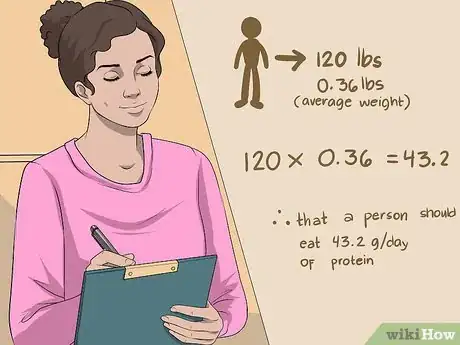
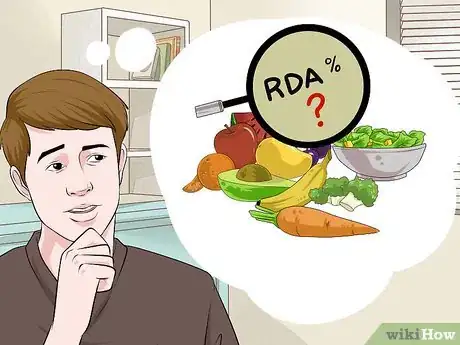


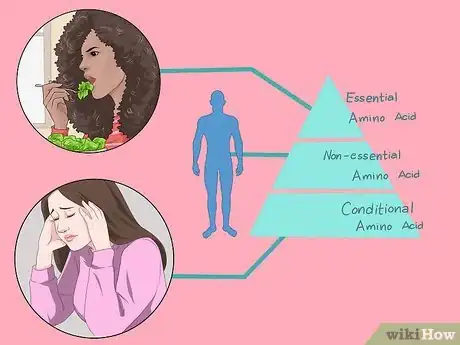


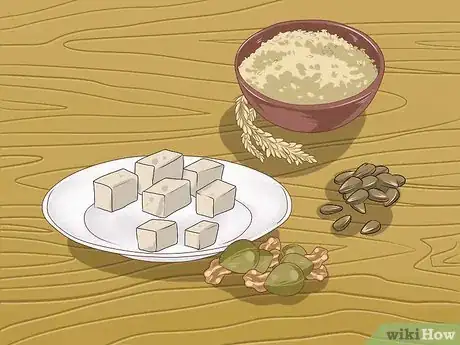


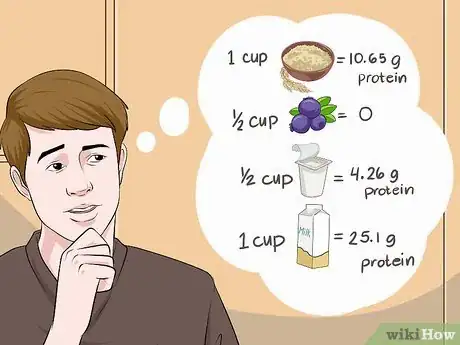

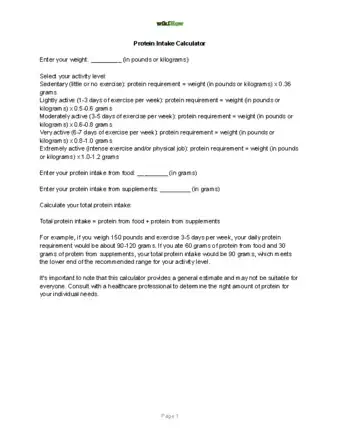
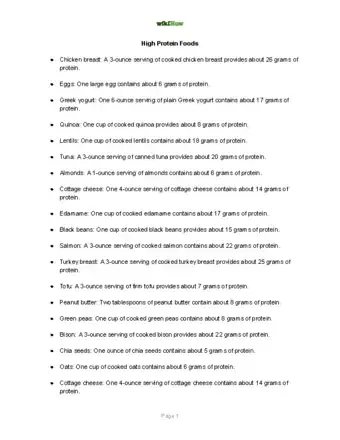
























































Medical Disclaimer
The content of this article is not intended to be a substitute for professional medical advice, examination, diagnosis, or treatment. You should always contact your doctor or other qualified healthcare professional before starting, changing, or stopping any kind of health treatment.
Read More...